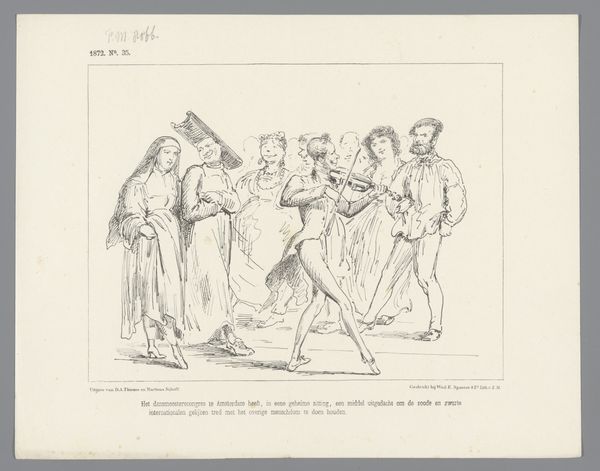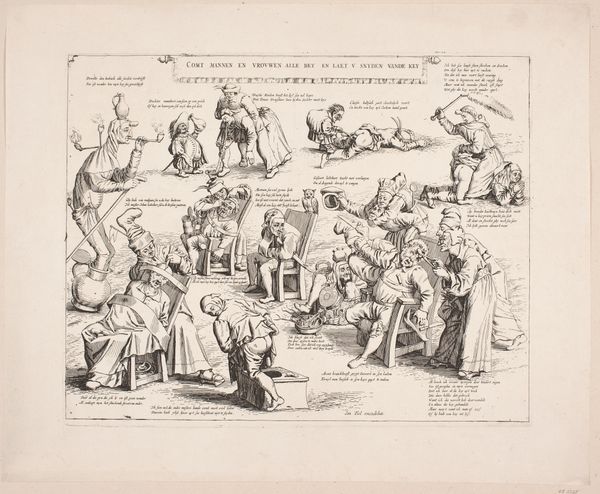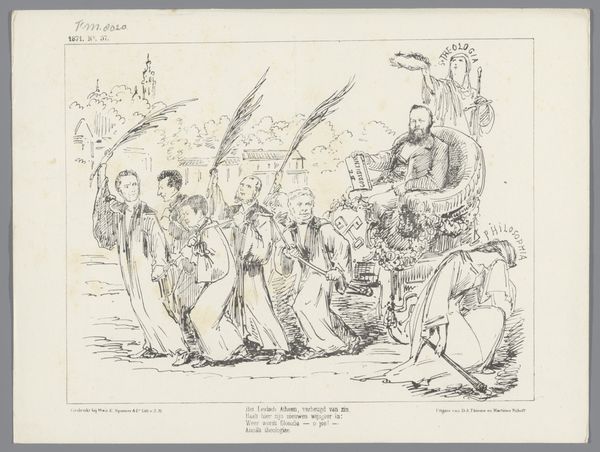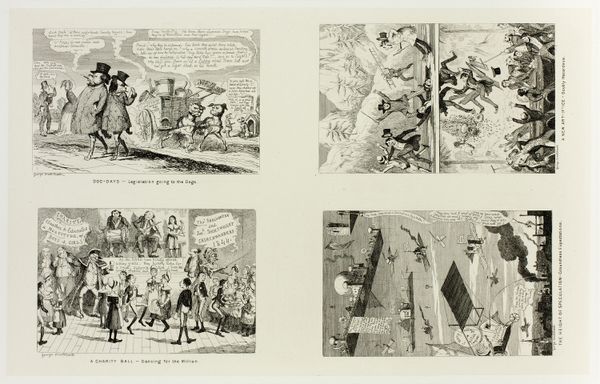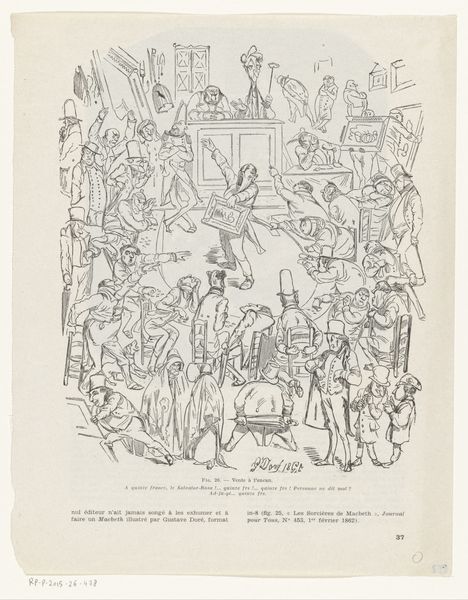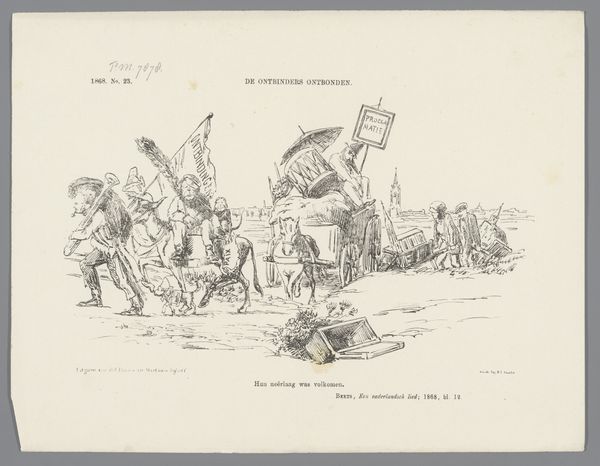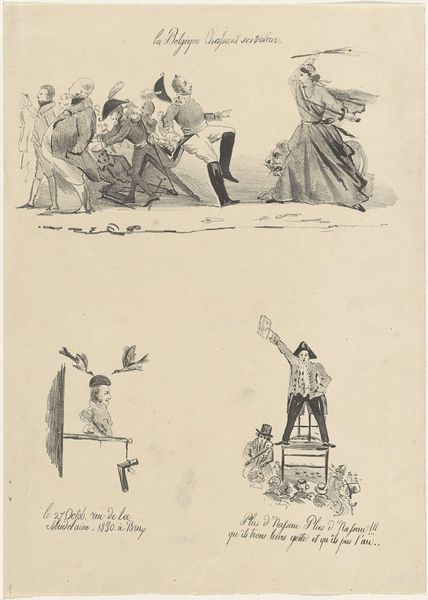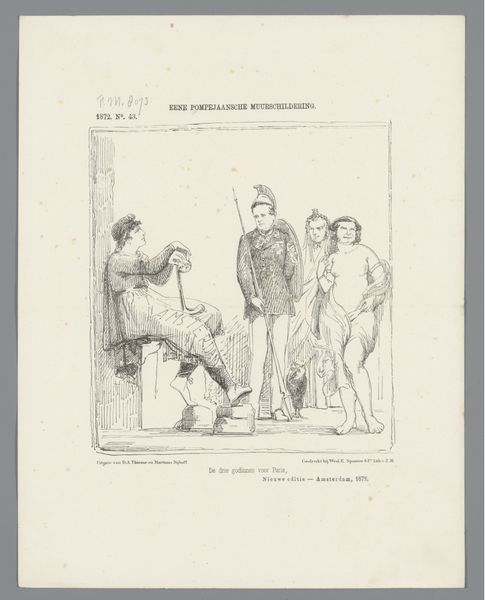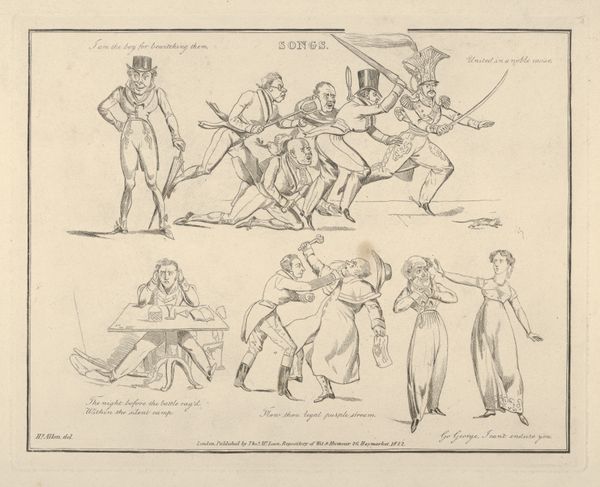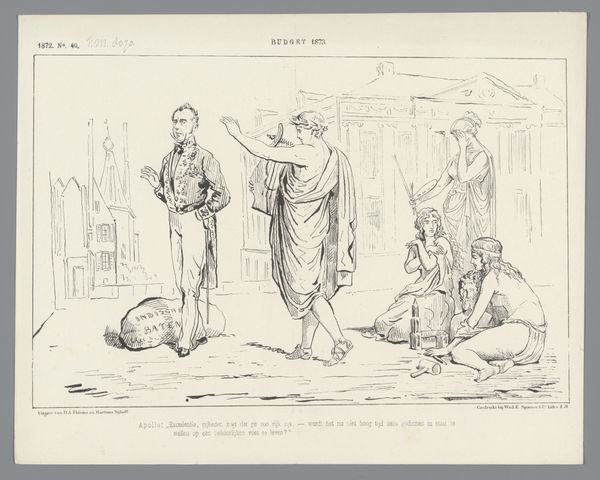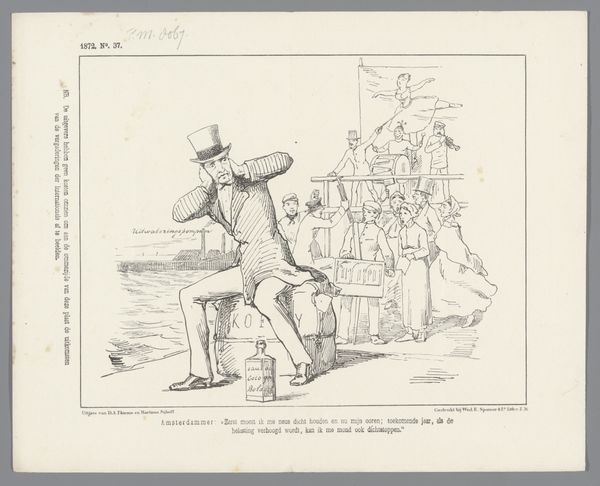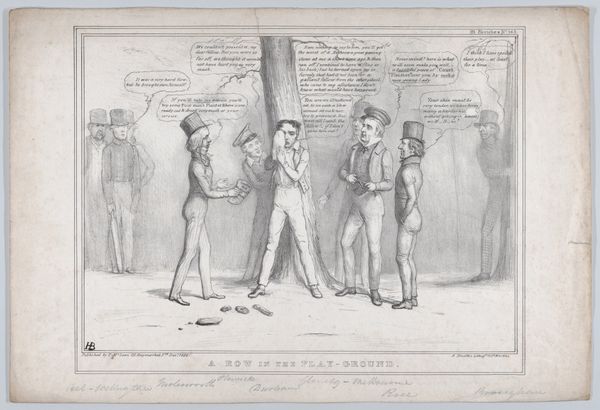
drawing, paper, ink, pen
#
drawing
#
comic strip sketch
#
quirky sketch
#
narrative-art
#
caricature
#
paper
#
personal sketchbook
#
ink
#
idea generation sketch
#
sketchwork
#
ink drawing experimentation
#
pen-ink sketch
#
sketchbook drawing
#
pen
#
genre-painting
#
storyboard and sketchbook work
#
sketchbook art
Dimensions: height 275 mm, width 215 mm
Copyright: Rijks Museum: Open Domain
Art Historian: Here we have a pen and ink drawing from 1872 titled, "Spotprent op de bezwaren tegen vaccinatie," which translates to "Cartoon on the objections to vaccination" by Johan Michaël Schmidt Crans. Curator: It’s immediately striking how much the sentiment expressed resonates today! The overall impression is one of skepticism bordering on outright mockery. The use of caricature to depict those opposed to vaccination feels pointed, and definitely presents a particular point of view on vaccination. Art Historian: Indeed. The work encapsulates the socio-political debates surrounding mandatory vaccination in the late 19th century. Looking closer, we see a tiered composition. In the upper register, men physically restrain someone near a sign marked "Anti-Vaccine Petition," while a man brandishes a whip. Below, a crowd of onlookers appears ambivalent. It offers insight into the public health policies of the time and the resistance they encountered. Curator: I’m also interested in how Crans frames the narrative. The whip implies coercion, but the resistant figures also come across as slightly ridiculous. What power dynamics are at play here? Is it just about public health or are there class, racial, or gendered anxieties simmering beneath the surface, influencing opinions on mandatory vaccination? Art Historian: Vaccination laws in the 1870s often intersected with anxieties about state control, individual liberties, and medical authority. Caricatures like these were instrumental in shaping public discourse. Curator: Right, the image becomes a site of contestation. Whose voices are amplified and whose are silenced? I’m wondering if the figures who resist also relate to ideas about the other versus an in-group who are perceived as being vaccinated. There is always, in any movement, power being pushed between both sides of the argument. Art Historian: These sorts of pieces were commissioned for periodicals of the era with explicit aims of swaying public opinions. To see the clear line drawn about what was ‘correct’ is useful when looking at these debates over time. Curator: Definitely, engaging with it today requires us to consider both the historical context and the continued relevance of these conversations. We should also really analyze the lasting effects of visual propaganda. Art Historian: Absolutely, understanding such imagery within its original framework and subsequent impact enhances our understanding of power and social engineering over the years. Curator: It does push one to question whose agenda the artwork advances.
Comments
No comments
Be the first to comment and join the conversation on the ultimate creative platform.
